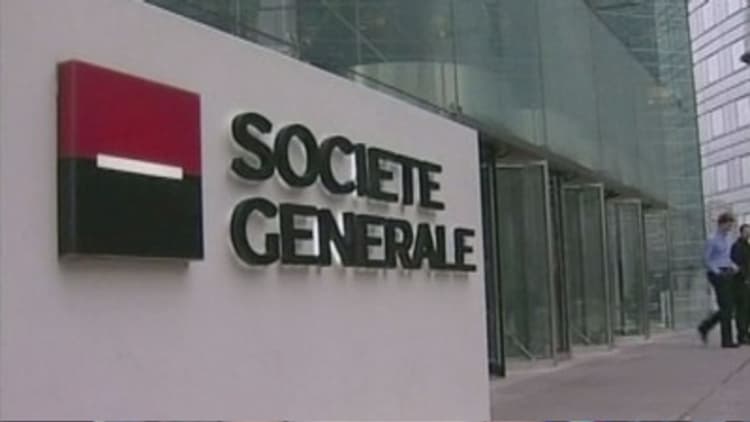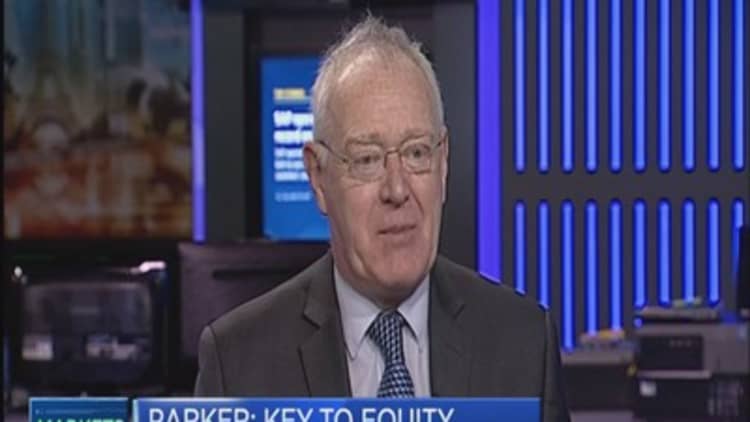
A falling Chinese yuan will unleash a wave of global deflation that will send the U.S. into its next recession and pull the back down to 550 points, according to a strategist at Societe Generale.
Albert Edwards, the notoriously bearish analyst at the French bank, released a note on Wednesday in response to the recent currency devaluations by the People's Bank of China (PBoC). This depreciation - with reports last week that it's far from over - is a result of an asset price bubble that the U.S. central backed helped to create, according to Edwards.
"(Quantitative easing in the U.S.) may not have done much to boost U.S. growth, but it certainly inflated global asset prices into the stratosphere," he said in the note Wednesday.
"If I am right, the S&P would fall to 550 (points), a 75 percent decline from the recent 2,100 peak. That obviously will be a catastrophe for the economy via the wealth effect and all the Fed's QE hard work will turn (to) dust."
The U.S. dollar has already gained over 1 percent so far this year against its Chinese counterpart with Beijing officials manipulating the yuan by using foreign exchange reserves. Talk of "currency wars" have been put firmly back on the agenda with a weaker exchange rate just one way that a country can boost exports and thus growth. But, cheaper exports from China are seen as likely to spread deflation globally as consumers from developed economies buy cheap imports rather than domestically produced goods.
Some economists highlight that Chinese imports aren't on the scale they once were and that the U.S. economy could withstand any pressure from overseas. However, Edwards sees a full blown trade war in the offing "not unlike that in the 1930s."
"If I am right and we have just seen a cyclical bull market within a secular bear market, then the next recession will spell real trouble for investors ill-prepared for equity valuations to fall to new lows," he added, using the cyclically adjusted price-to-earnings ratio, known as Shiller P/E, for his gloomy prediction on the S&P 500. He gave no timeframe for his latest call.
"The Fed will fight the next bear market with every weapon available including deeply negative Fed Funds rates in addition to more QE. Indeed, negative policy rates will become ubiquitous," he said.
Edwards believes his "Ice Age" thesis—economic cycles that deteriorate in ever decreasing circles—is drawing ever closer to its final stages. While his bearish thoughts and predictions are widely read by colleagues and rivals at fellow banking organizations, they do not always come true.
In September 2012, he announced the U.S. was in recession and Wall Street would soon react, and warned of an "ultimate" death cross for the S&P 500—where the 50-day moving average falls below the 200-day trend line. Instead the S&P 500 continued to rally, and has gained around 35 percent since Edwards' pronouncement.
However, a slew of economists have voiced concerns about hefty valuations in U.S. equity markets, especially after several bouts of major volatility at the beginning of the year. RBS' analyst Andrew Roberts warned last week that "danger is lurking" for every investor and spoke of a compulsion to "sell mostly everything."
But where there's fear, there could also be a buying opportunity. Capital Economics on Wednesday said it had no fears of an "impending collapse" for U.S. equities and said in a research note that its year-end forecast for the S&P 500 was 2,200 points, from its current level of around 1,940 points.
Bob Parker, a senior advisor for investment strategy and research at Credit Suisse, told CNBC Tuesday that investors should actually be poised for a rally in February, suggesting equities will find a bottom later this month.





